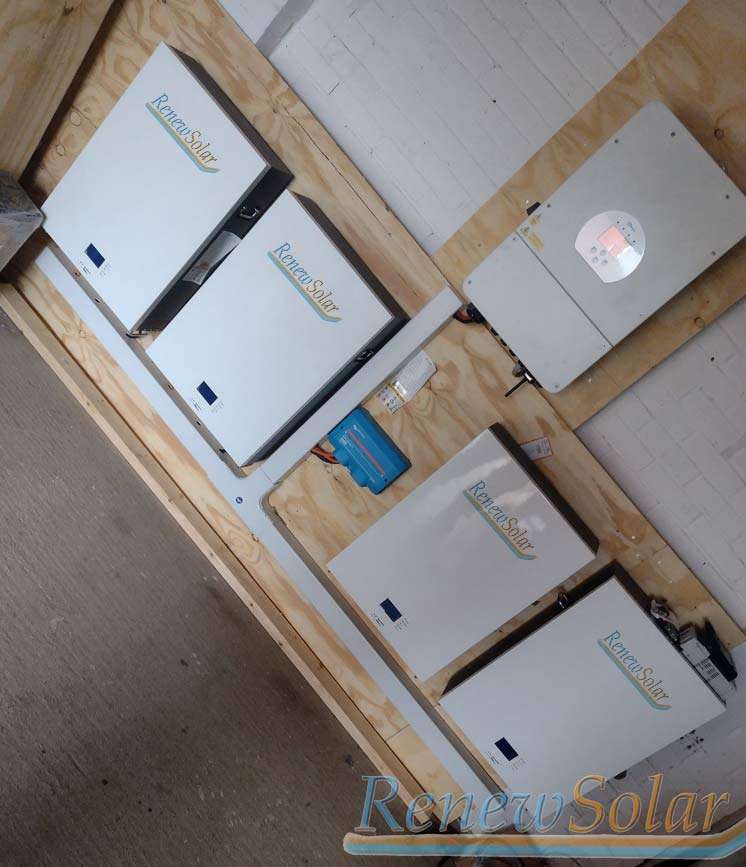Power Up Your Savings: Battery Storage and Time-Varying Electricity Rates
Imagine being able to buy electricity when it’s cheapest and use it when it’s expensive. That’s the basic idea behind energy trading, and with the help of energy storage batteries, it’s becoming increasingly accessible for homes and businesses.
This article explores how a 40 kWh battery storage system can work with Octopus Agile, a time-varying energy tariff provider in the UK, to potentially bring you significant cost savings.
Octopus Agile: Buying Electricity Like a Wholesale Pro
Octopus Agile offers electricity prices that fluctuate throughout the day, reflecting real-time wholesale market costs. During off-peak hours, when demand is low, electricity can be significantly cheaper. Conversely, prices surge during peak hours when demand is high.
Here’s the beauty of combining a battery storage system with Octopus Agile:
- Buy Low, Sell High: By strategically charging your battery during off-peak hours when electricity is cheapest (around 7.4 pence per kilowatt hour with Octopus Agile), you can store the power for later use.
- Peak Power Play: When electricity prices spike during peak hours (Octopus Agile rates can go as high as 28.7 pence per kilowatt hour), you can discharge your battery and use the stored power, effectively avoiding the expensive grid electricity.
A 40 kW Battery: Powering Your Savings
A 40 kW battery storage system can provide a substantial energy buffer for your home or business. The size of the battery you’ll need depends on your specific electricity consumption habits.
Here are some general points to consider:
- Matching Your Needs: A 40 kWh battery might be suitable for a small commercial facility or a large home with high electricity usage.
- Charging Efficiency: Battery capacities are typically rated in usable energy, not the total energy they can store. Factor in charging efficiency losses (around 10-15%) when calculating your usable storage capacity.
- Discharge Rates: Not all batteries can discharge their entire capacity at once. Make sure the discharge rate of your battery aligns with your peak power consumption needs.
The Key: Understanding Your Consumption Habits
To maximize your savings with energy trading and battery storage, it’s crucial to understand your electricity consumption patterns.
- Track Your Usage: Monitor your electricity usage throughout the day to identify peak hours and high-consumption periods.
- Align Charging and Discharging: Schedule your battery charging during Octopus Agile’s off-peak hours and aim to discharge during peak hours to benefit from the price difference.
Not a One-Size-Fits-All Solution
While energy trading with battery storage offers exciting possibilities for saving money on electricity bills, it’s important to consider some limitations:
- Initial Investment: Battery storage systems require a upfront cost.
- Complexities of Management: Operating a battery storage system for energy trading can involve some complexity, especially when dealing with multiple time-based tariffs.
- Limited Peak Power Shaving: A 40 kWh battery may not be enough to completely offset peak hour electricity needs for larger facilities, but most homes will use on average 13kwh a day.
Conclusion: Exploring the Potential
Battery storage systems open doors for smarter energy management and cost savings, particularly when combined with time-varying electricity tariffs like Octopus Agile. By carefully assessing your consumption habits and understanding the capabilities of a 40 kWh battery, you can determine if this approach is the right fit for you. you do not need to have solar for this money saving option, but having some can make some difference, We call this “token Solar”.
You would need a larger inverter to cover you peak rate power draw. We would recommend around 8Kw inverters. This entails a G99 application and pre approval from the DNO if you wish to be parallel with the grid.
You may require a special server set up to work with your energy provider so that you can automatically charge on cheap or paid to use times, and sell at high feed in payments. * we do provide these.
For 20Kwh batteries See here 20Kwh Wall mounted Battery — RenewSolar
For 15Kwh Battery See here: 15kWh Battery 48v — RenewSolar
For 8 Kw Inverter : SunSynk 8kW hybrid inverter — RenewSolar
Costs and returns
A typical installation cost would be around £4,700.
kWh price difference 21.6 pence
4700/0.216 = 21,759.26
1470 days (4 years) break even at zero grid sell single day single cycling.

No responses yet